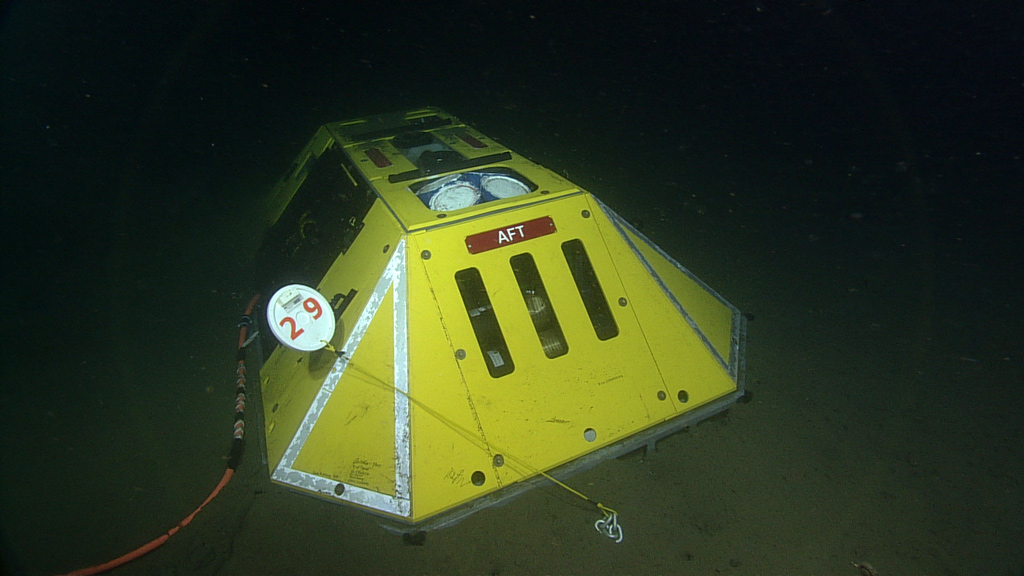VISIONS ’14 Deploys Remaining Cabled Array Infrastructure

(Click to enlarge) Endurance Oregon Offshore Benthic Experiment Package (BEP) deployed on Dive 1745, July 14 at about 1700 local time. The package contains nine different oceanographic sensors, and was connected by a 50 meter oil-filled cable to the LV01C junction box, allowing it to send near real-time data back to shore. The attached hydrophone (underwater microphone) was deployed a few meters away. (Photo Credit: NSF/UW/CSSF, Dive R1745, VISIONS ’14)
The Research Vessel (R/V) Thomas G. Thompson set sail July 13th on the VISIONS ’14 expedition to complete construction of the OOI Cabled Array in the Northeast Pacific.
The cruise was led by an OOI team from the University of Washington, utilizing the state-of-the-art Canadian remotely operated vehicle (ROV), ROPOS. The cruise comprised a total of seven legs totaling 83-days.
Visions ’14 involved heavy use of ROPOS in the deployment of seven instrumented sites (five at Axial Seamount and two Hydrate Ridge), one Cabled Shallow Profiler Mooring at Slope Base, and Deep & Shallow Cabled Profiler Moorings at Axial Base. A total of 89 instruments were deployed.
ROPOS was also used in the deployment of over 20 miles of extension cables to connect these instrumented sites to their respective primary nodes. Throughout these operations the students and crew onboard the R/V Thompson worked around the clock conducting tests and surveys, including numerous CTD casts and bathymetric multi-beam sonar surveys.
Work during Visions ’14 also focused on cabled sites associated with the Endurance Array on the continental shelf. With the help of ROPOS, cables were laid to connect the Oregon Line of the Endurance Array to Cabled Array Primary Nodes (PN1C & PN1D). Two Benthic Experiment Packages were deployed at the Endurance Array as well as one Cabled Surface-Piercing Profiler Mooring, one Cabled Deep Profiler Mooring, and one Cabled Shallow Profiler Mooring. A total of 46 instruments were deployed.
When the Cabled Array is fully operational in 2015, each study site will be provided with real-time, two-way, high-bandwidth communication and power through 540 miles of primary electro-optical telecommunications cable connected to the shore station in Pacific City, Oregon. Each primary node within the Cabled Array provides two-way communication and supplies instrument arrays with up to 10 gigabits per second of communications bandwidth and 8 kilowatts of power. Data will be collected by over 30 different types of seafloor and water column sensors, transmitted by cable, and made publicly available onshore in near-real time via the Internet. Preliminary Seismometer data are currently available here.
For more information on Cabled Array deployments check out the following stories
For more information on instruments located on the Cabled Array click here. For more information on the cruise, daily log, and photos, check out the Visions ’14 website.
